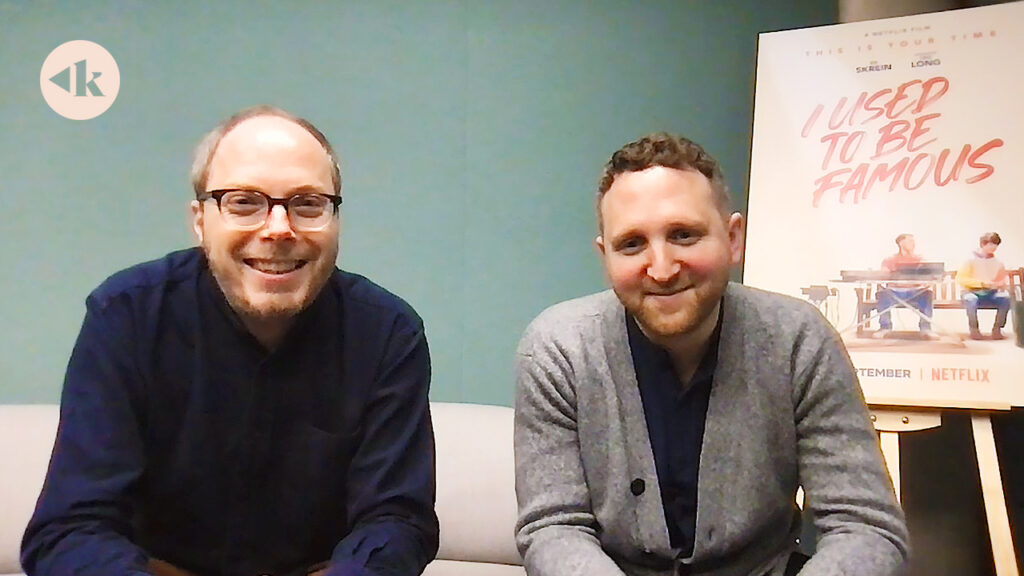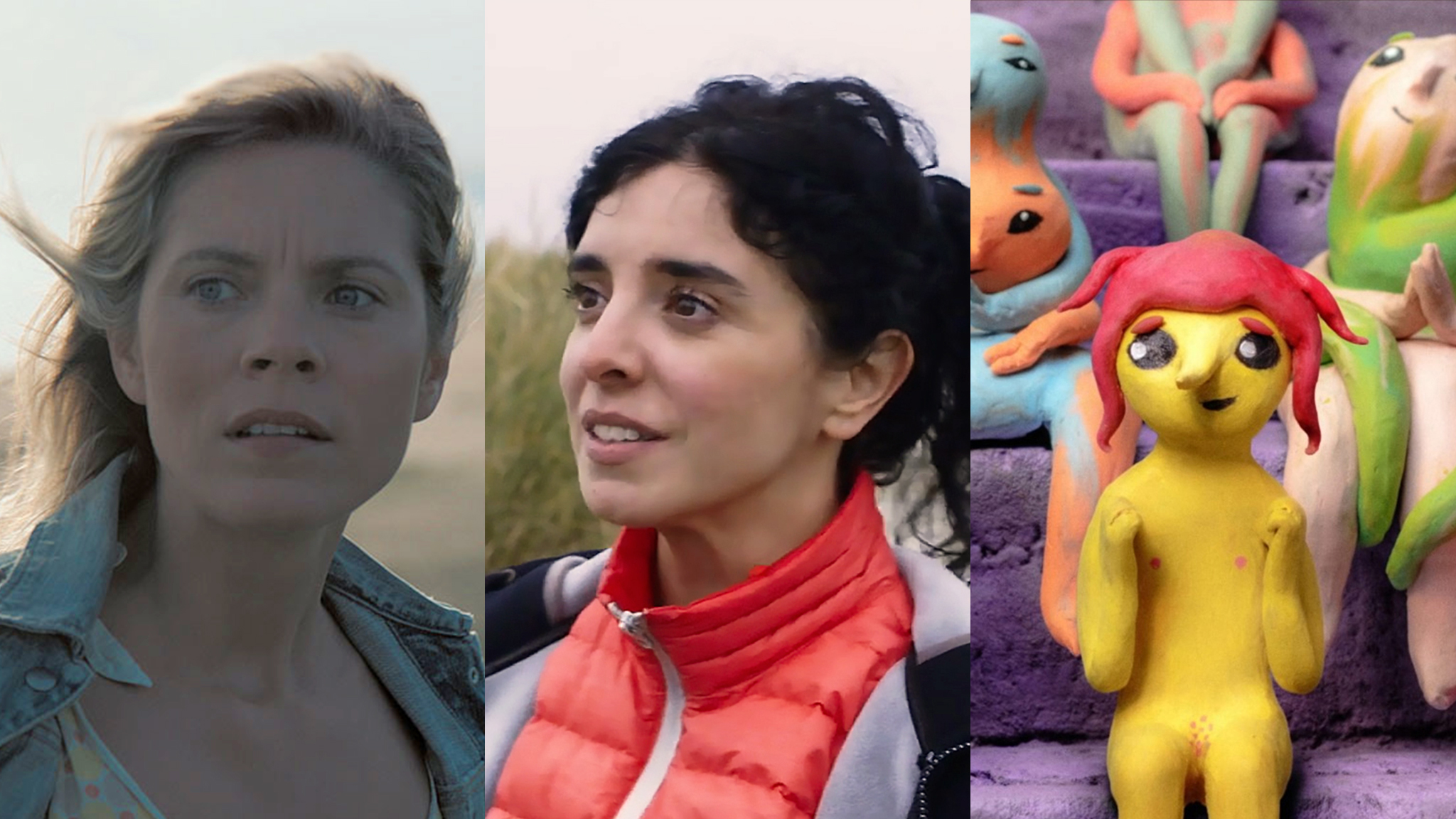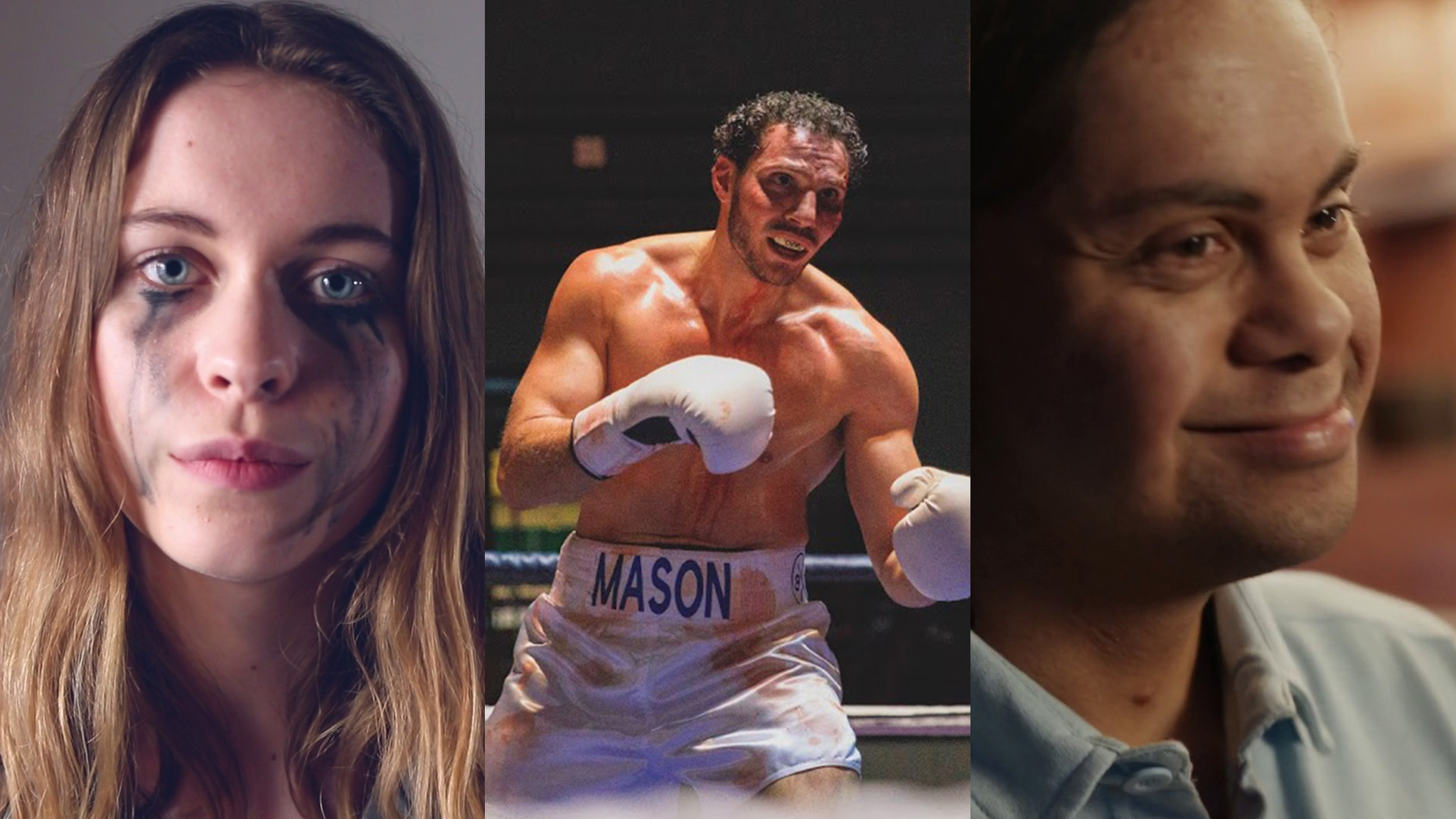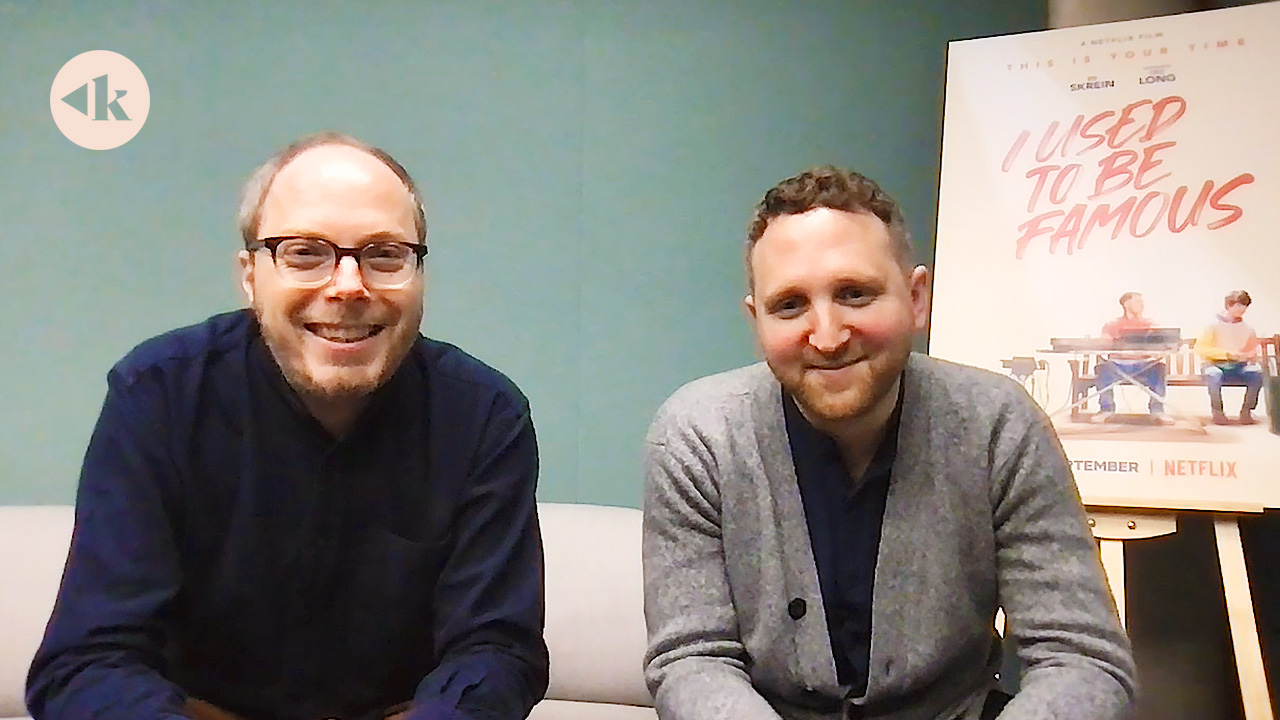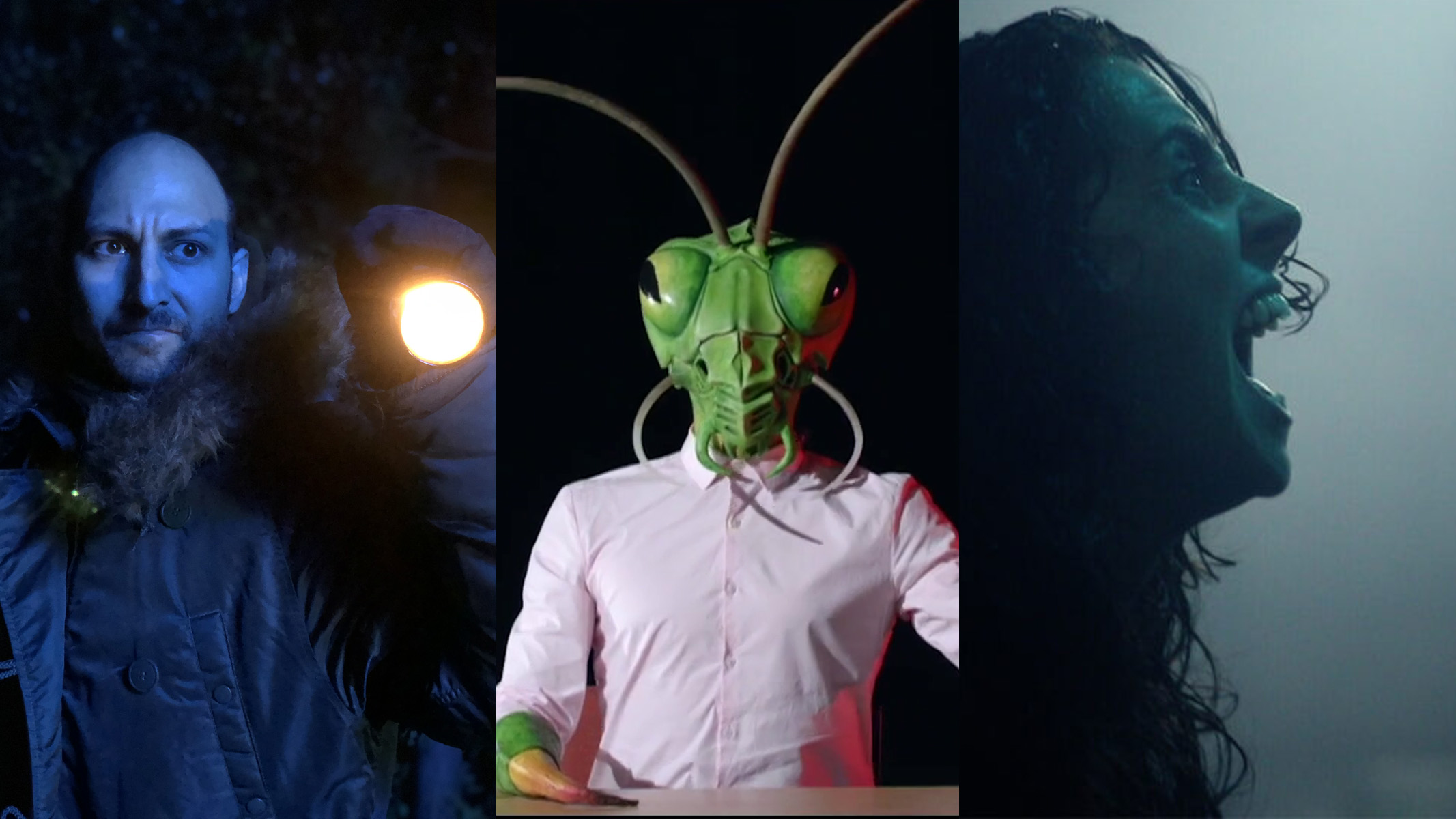- Find your ‘big idea’
- Write (and keep refining) your script
- Build a passionate team
- Create a strong identity for your project
- Get your short film noticed
How do you get from short film to feature? If you’re a first-time filmmaker with no track record, getting your first feature film made is no small feat. The popularisation of crowdfunding platforms and the democratisation of digital distribution have made independent filmmaking more accessible – but they also require strong marketing skills, and building a fan base is a long-term endeavour.
On the other hand, VOD is an increasingly competitive market – to keep attracting new users, Netflix, Prime Video, Disney+, Apple TV+ and the likes rely more and more on original (and consequently, exclusive) content: there might just go your chance to get their interest with a good script.
That’s what director Eddie Sternberg and producer Chris Pencakowski did with “I Used To Be Famous”, which went from independent short film to one of the most watched Netflix original features in the first few weeks after it came out.
How did they do it? That’s what we asked them in this 4-part interview:
1. Find your ‘big idea’
It is 2014 when Eddie first comes up with the idea of “I Used To Be Famous”. At the time, many former boy and girl bands are making some sort of come-back, and it gets Eddie thinking about these young artists who get eaten up by the industry at such a young age and then spat out – how do they fill the subsequent void? And is that really what music is supposed to be about, when, on the other hand, playing an instrument has been such a source of empowerment for Eddie’s autistic cousin Saul?
And right there, was the ‘big idea’ of “I Used To Be Famous”: what if these two worlds collided? What if a fallen rock star met a gifted young autistic drummer?
2. Write (and keep refining) your script
Once you’ve got your idea, it’s time to write your feature script! You can never go wrong with having a strong opening image: that’s what sets the tone and tells your audience what kind of film they are about to watch. Famous screenwriter Blake Snyder also recommends making your closing image an echo of your opening image, to show your character’s evolution(1) – something to keep in mind.
The opening image happened to be the very first thing that came to Eddie for “I Used To Be Famous”:

The first image was the first thing I told [Chris] about. It was Vince with Stereo Dream back in the day, in slow motion, walking out from backstage, and all the fans disappearing.
Eddie Sternberg
And that effectively tells us immediately what “I Used To Be Famous” is about.
As we mention in our “6 Tips for Writing a Short Film that Delivers Big” post, it can also be a good idea to bring another writer on board, as Eddie did with Zak Klein and their script consultant Ed Clarke. But whether you decide to team up or fly solo – without sounding harsh, don’t forget that no one owes you anything. So if you want to get people on board (finances, producers, distributors) you need to grab their attention and make sure your script is the best version it can possibly be.
3. Build a passionate team
If you’re a first-time filmmaker, you likely don’t have a go-to team yet, and you might be tempted to do everything by yourself. But don’t forget that filmmaking is a collaborative project – you can’t do it all on your own, babe.

There are people that have expertise in fields that you don’t have, that will be better than you, and you need them to focus on that, so you can focus on writing and directing.
Eddie Sternberg
So, time to assemble your A team! Make sure you recruit people who are right for your project. The development process is a long journey, so you’ll need team members who are as passionate about your project as you are. When reaching out to potential collaborators, you’ll find it more rewarding to target those who match your style rather than “scatter-gunning”:

You’ll have greater success if you research which sales agents are doing what, which execs are doing what, find out what their taste is like, and focus your efforts.
Chris Pencakowski
Eddie also recommends to favour enthusiasm (and as much as possible, talent) over credentials:

Don’t just email producers because they’ve done something that’s done really well. They might not be as good for you as someone who hasn’t made any films yet, but who loves what you do.
Eddie Sternberg
4. Create a strong identity for your project
Your film is so much more than its synopsis, or even its script. When pitching it to your team or potential new collaborators, make sure to include as many elements as possible to help your audience understand your vision and get enthusiastic about it.
For the film treatment of “I Used To Be Famous”, Eddie and Chris used mood boards, song lists, and even picked the font for the film title! Not everything needs to be set in stone from the very beginning, and there might be changes along the way, but it’s all about materialising your vision to help your (potential) collaborators project themselves into it.
Another great pitching element is having a proof of concept, such as… a short film. The goal is not to make a ‘mini feature’, but rather to put together a few key scenes that depict your idea, whilst preferably still telling a coherent story and ideally leaving your audience hungry for more.
5. Get your short film noticed
Making a short film as a proof of concept for a feature is a very common move for first-time and/or independent filmmakers. It is what launched several famous careers, such as Wes Anderson’s: his very first feature, “Bottle Rocket”, was originally a short film of the same name, shot in black and white due to budgetary restrictions and starring his classmate and his classmate’s brother: Owen and Luke Wilson. The short film was shown at the 1994 Sundance Film Festival(2), where it got the attention of producers Polly Platt and James L. Brooks and eventually became the now cult 1996 feature film.
So once you’ve got your short film made, get it seen! Don’t shy away from film festivals and other networking events and use your short film as your business card whenever you pitch your feature.

Use the confidence that making that short film has given you to reach out to bigger industry players and say, “this is the direction we want to go”.
Chris Pencakowski
We hope this interview and these 5 tips to get from short film to feature will inspire you to kick things off with your own project. And remember, filmmaking is not a sprint, it’s a marathon – so take care of yourself and make sure you’re passionate about what you do!
“I Used To Be Famous” is streaming now on Netflix.
References & Additional resources
(1) “Save the Cat! The Last Book on Screenwriting You’ll Ever Need”, Blake Snyder (2005).
(2) “Wes Anderson’s black-and-white short film ‘Bottle Rocket’”, Far Out.
Klipist Team
Klipist is a streaming platform for the best short films that we carefully select, curate and support. www.klipist.com

